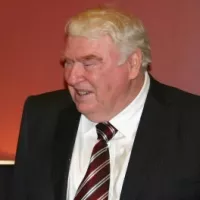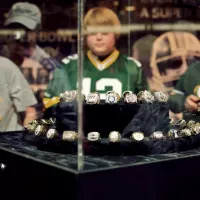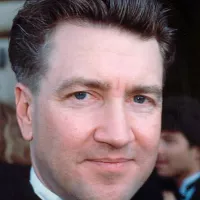The NFL Pro Bowl Games, formerly known as the All-Star Game (1939-1942) and Pro Bowl (1951-2022), is an annual event showcasing the National Football League's (NFL) top players. Originally held as the All-Star Game, it transitioned to the Pro Bowl name and, more recently, to the Pro Bowl Games format. The event has seen various changes throughout its history, but its core purpose remains to highlight exceptional NFL talent.
January 15, 1939: First NFL All-Star Game
The first NFL All-Star Game, including players from the 1938 season and some non-league participants, was held on January 15, 1939, at Wrigley Field in Los Angeles.
1939: First NFL All-Star Game
The first NFL All-Star game, featuring players from the 1938 season and some non-league players, took place in 1939 at Wrigley Field in Los Angeles.
1940: All-Star Game in Los Angeles
In 1940, the NFL All-Star game was held in Los Angeles for the second consecutive year.
1942: All-Star Game in Philadelphia
In 1942, the NFL All-Star game was held in Philadelphia. This would be the last All-Star game before the event was discontinued due to World War 2 travel restrictions.
1949: AAFC Shamrock Bowl
Following the 1949 season, the All-America Football Conference held its own all-star game, the Shamrock Bowl, before merging with the NFL.
June 1950: Pro Bowl Approved
In June 1950, the "Pro Bowl" was approved, reviving the concept of an all-star game in the NFL with a new name and format.
January 1951: First Official Pro Bowl with Conference Format
The first official Pro Bowl took place in January 1951, introducing the format of American/Eastern Conference vs. National/Western Conference.
1951: Start of Pro Bowl in Los Angeles
From 1951 to 1972, the Pro Bowl was consistently held in Los Angeles.
1951: Player of the Game Award Introduced
The Pro Bowl began awarding a Player of the Game award starting in 1951.
1951: First Official Pro Bowl
The first official Pro Bowl was played in January 1951, marking a shift from the previous all-star game format. It featured a matchup between the top players from the American/Eastern and National/Western Conferences.
1956: Player of the Game Award Format Change
The format for Player of the Game award changed after the 1956 Pro Bowl.
1957: Outstanding Back and Lineman Awards Introduced
From 1957 to 1971, the Pro Bowl presented awards for Outstanding Back and Outstanding Lineman.
1962: Ray Nitschke's MVP Performance
In 1962, Ray Nitschke was named MVP of the NFL Championship Game. Despite this achievement and seven All-Pro selections, he was only selected to the Pro Bowl once.
January 1967: Pro Bowl Helmet Change
From January 1967 to January 1970, both Pro Bowl teams wore gold helmets with the NFL logo. The Eastern team had a red-white-red stripe, and the Western team had a blue-white-blue stripe. Players used their own helmets, which were then spray-painted for the game.
January 1970: Pro Bowl Helmet 50th Anniversary Logo
The 1970 Pro Bowl helmets featured the '50 NFL' logo to mark the league's 50th anniversary.
1970: Pro Bowl Scheduled After Super Bowl
Between 1970 and 2009, the Pro Bowl was typically held the weekend after the Super Bowl.
1970: AFC-NFC Pro Bowl Begins
Following the AFL-NFL merger in 1970, the Pro Bowl was officially named the AFC-NFC Pro Bowl, featuring players from the American Football Conference (AFC) against those from the National Football Conference (NFC).
1971: Start of John Riggins' Career
1971 marked the beginning of John Riggins' NFL career, which, despite his Hall of Fame status and setting a record for rushing touchdowns in a season, included only one Pro Bowl selection.
1971: Outstanding Back and Lineman Awards Discontinued
The awards for Outstanding Back and Outstanding Lineman were discontinued after the 1971 Pro Bowl.
1972: End of Pro Bowl's Los Angeles Residency
After 1972, the Pro Bowl's location began to rotate annually.
1972: Offensive and Defensive Player Awards Introduced
Starting in 1972, the Pro Bowl began awarding Outstanding Offensive Player and Outstanding Defensive Player.
1973: Single Player of the Game Award Reinstated
From 1973 to 2007, a single Player of the Game award was presented in the Pro Bowl, replacing separate awards for backs and linemen.
1975: Pro Bowl Moves to ABC's Monday Night Football
The Pro Bowl moved to ABC's Monday Night Football in 1975.
1978: Start of Divisional Playoff Coach Selection Format
From 1978 through 1982, the coaching staff of the team that lost in the Divisional Playoff Round and had the best regular-season record was selected to coach the Pro Bowl.
1978: Change in Pro Bowl Coaching Selection
From 1978 to 1982, the head coaches for the Pro Bowl were chosen from the highest-ranked divisional champion that lost in the Divisional Playoff Round.
1979: Players Begin Wearing Team Helmets in Pro Bowl
Starting in 1979, Pro Bowl players began wearing their respective team helmets, replacing the generic AFC and NFC helmets used previously.
1980: Pro Bowl Moves to Hawaii
The Pro Bowl moved to Aloha Stadium in Halawa, Hawaii, in 1980, where it would be held for 30 consecutive seasons.
1982: End of Divisional Playoff Coach Selection Format
The format where the coaches of the Divisional Playoff Round losing teams with the best regular season record coached the Pro Bowl was discontinued after 1982.
1983: Resumption of Conference Championship Coach Selection
Starting with the 1983 Pro Bowl, the NFL reverted to selecting the losing head coaches from the conference championship games to coach in the Pro Bowl.
1985: End of John Riggins' Career
John Riggins retired from the NFL in 1985 after a distinguished career that, surprisingly, saw him selected to the Pro Bowl only once.
1987: Pro Bowl on ABC's MNF Ends
The 1987 Pro Bowl marked the end of its run on ABC's Monday Night Football.
1988: Pro Bowl Moves to ESPN Sunday Night Football
The Pro Bowl transitioned to ESPN's Sunday Night Football in 1988.
1994: Pro Bowl on ESPN Concludes
1994 was the last year the Pro Bowl aired on ESPN's Sunday Night Football.
1995: Fan Voting Introduced for Pro Bowl Selection
Starting in 1995, fans were given the opportunity to vote for Pro Bowl players alongside coaches and players. Each group's vote counts for one-third of the total.
1995: Pro Bowl Returns to ABC
The Pro Bowl returned to ABC in 1995.
1999: Bill Belichick Replaces Bill Parcells as AFC Pro Bowl Coach
In 1999, New York Jets assistant head coach Bill Belichick took over as the AFC Pro Bowl coach after head coach Bill Parcells declined due to health reasons.
2003: Dan Fouts Replaces John Madden for Pro Bowl Broadcast
Dan Fouts took John Madden's place as broadcaster for the 2003 Pro Bowl.
2003: Pro Bowl's Run on ABC Ends Again
The Pro Bowl's second stint on ABC ended in 2003.
2004: Aaron Smith's Pro Bowl Selection
In 2004, Aaron Smith received his sole Pro Bowl selection in his 13-year career, despite winning two Super Bowl rings and consistent recognition as one of the NFL's most underrated players.
2004: Pro Bowl Moves to ESPN
The Pro Bowl moved to ESPN in 2004 after several years of declining ratings on ABC.
2006: Pro Bowl's Short Run on ESPN Ends
In 2006, the Pro Bowl finished its short run on ESPN, which it had moved to in 2004 after a period of declining viewership on ABC.
2007: Fred Taylor's Only Pro Bowl
2007 marked the only Pro Bowl selection for Jacksonville Jaguars halfback Fred Taylor, despite a career average of 4.6 yards per carry, placing him among the top running backs of all time.
2007: Pro Bowl on CBS, Held on Saturday
The 2007 Pro Bowl aired on CBS and was uniquely held on the Saturday after the Super Bowl due to the Grammy Awards.
2007: Player of the Game Award Discontinued
The Player of the Game award was discontinued after the 2007 Pro Bowl.
2008: Most Valuable Player Award Introduced
In 2008, the Pro Bowl introduced the Most Valuable Player (MVP) award.
2008: Redskins Players Honor Sean Taylor
In the 2008 Pro Bowl, several Washington Redskins players wore the number 21 to honor their teammate Sean Taylor, who was murdered in 2007.
2008: Pro Bowl on Fox
The 2008 Pro Bowl was broadcast on Fox.
2008: Dallas Cowboys Set Pro Bowl Player Record
The Dallas Cowboys sent a record thirteen players to the 2008 Pro Bowl, highlighting the influence of fan voting.
2009: Pro Bowl Moved, Coaching Selection Format Changes
In 2009, the Pro Bowl was moved to the weekend between the Conference Championship games and the Super Bowl. This also prompted a change in the coaching selection, reverting to the format used from 1978 to 1982 where coaches from the team with the best regular season record that lost in the Divisional Playoff Round would coach their respective conference's Pro Bowl team.
2009: John Madden's Final Pro Bowl Broadcast
The 2009 Pro Bowl marked John Madden's last time broadcasting the event before his retirement, with Cris Collinsworth filling in.
2009: Final Pro Bowl in Hawaii (Initial Run)
The 2009 Pro Bowl was the last one played in Hawaii before a brief hiatus.
2010: Super Bowl Participants Excluded from Pro Bowl
Beginning in 2010, players from teams advancing to the Super Bowl were no longer eligible to participate in the Pro Bowl. They are replaced by alternate players.
2010: Pro Bowl Scheduled Before Super Bowl
From 2010 to 2022, the Pro Bowl was played on the Sunday before the Super Bowl.
2010: Criticism of Pro Bowl Player Voting
In 2010, the Pro Bowl player voting process faced significant criticism due to factors such as politics, incumbency, personal vendettas, and compensation for injury influencing player choices. This sometimes resulted in less deserving players being selected over more deserving players. A notable example is Terrell Suggs admitting to voting for Ryan Fitzpatrick over Tom Brady out of disrespect for the Patriots, not based on performance.
2010: Pro Bowl Moved Before Super Bowl, Super Bowl Players Banned
In 2010, the Pro Bowl was moved to the week before the Super Bowl, and players participating in the Super Bowl were prohibited from playing in the Pro Bowl.
2010: Pro Bowl in Miami
The 2010 Pro Bowl was played at Sun Life Stadium in Miami, marking the first time it was held before the Super Bowl.
October 24, 2012: Goodell's Concerns about Pro Bowl
On October 24, 2012, NFL Commissioner Roger Goodell expressed concerns about the Pro Bowl's lack of competitiveness and threatened its discontinuation.
2012: Criticism of Low Defensive Effort in Pro Bowl
The 2012 Pro Bowl drew criticism for the perceived lack of defensive effort, sparking discussions about the game's future.
2012: Criticism of Pro Bowl Quality
The 2012 Pro Bowl faced significant criticism for its perceived lack of competitive play, leading to discussions about the future of the event.
October 7, 2013: Nike Unveils 2014 Pro Bowl Uniforms
On October 7, 2013, Nike revealed the new Pro Bowl uniforms, abandoning the traditional red, white, and blue colors. The uniforms, featuring bright orange and volt green, received mixed reactions.
2013: End of Divisional Playoff Coach Selection Format
After being reinstated in 2009, the format for selecting Pro Bowl coaches from Divisional Playoff losing teams was once again discontinued after 2013.
2013: End of Traditional Conference Format
The 2013 Pro Bowl marked the end of the traditional AFC vs. NFC format, which would be replaced by an unconferenced format in the following years.
2013: Players Association Lobbies for Pro Bowl
The NFL Players Association advocated for the continuation of the Pro Bowl, leading to rule changes for the 2014 game.
April 9, 2014: 2015 Pro Bowl Location Announced
On April 9, 2014, the NFL announced that the 2015 Pro Bowl would be held in Glendale, Arizona.
2014: Pro Bowl Introduces Unconferenced Format
From 2014 to 2016, the Pro Bowl abandoned the traditional AFC vs. NFC format. Players were drafted onto teams regardless of their conference affiliation.
2014: Change in Pro Bowl Coaching Selection for Unconferenced Format
From 2014 to 2016, the Pro Bowl coaches were selected from the two teams with the best records that lost in the Divisional Playoffs.
2014: Unconferenced Pro Bowl Format
From 2014, the NFL experimented with an unconferenced Pro Bowl format. Teams were selected by honorary captains instead of by conference affiliation.
2014: Non-Traditional Pro Bowl Uniforms Debut
In 2014, the Pro Bowl featured non-traditional uniforms with bright orange and volt green, diverging from the usual red, white, and blue.
2014: Introduction of Fantasy Draft Format
In 2014, the Pro Bowl introduced a fantasy draft format for team selection, with alumni captains choosing players.
2014: Last Pro Bowl on Network Television for Four Years
The 2014 Pro Bowl, aired on NBC, was the last Pro Bowl on network television for four years.
2014: Return of Offensive and Defensive Player Awards
The Pro Bowl reinstated the awards for Outstanding Offensive Player and Outstanding Defensive Player in 2014.
January 25, 2015: 2015 Pro Bowl in Arizona
The 2015 Pro Bowl was played at University of Phoenix Stadium in Glendale, Arizona, on January 25, 2015.
2015: New England Patriots Decline Pro Bowl Participation
After losing the conference championship, the 2015 New England Patriots declined to participate in the Pro Bowl.
2015: John Harbaugh Replaces John Fox as Pro Bowl Coach
In 2015, John Harbaugh replaced John Fox as a Pro Bowl coach after Fox left his coaching position with the Denver Broncos after their playoff loss.
2015: NFL Lifts Pro Bowl Blackout Rules
In 2015, the NFL lifted its blackout rules for the Pro Bowl, allowing it to be shown locally even if the game didn't sell out.
2015: ESPN Holds Exclusive Rights to Pro Bowl
Starting in 2015, ESPN secured exclusive rights to broadcast the Pro Bowl.
May 19, 2016: 2017 Pro Bowl Location Announced
On May 19, 2016, it was announced that the 2017 Pro Bowl would be held at Camping World Stadium in Orlando, Florida.
June 1, 2016: Reinstatement of Conference Format
On June 1, 2016, the NFL officially announced the return to the traditional AFC vs. NFC conference format for the Pro Bowl.
2016: Last Year of Non-Traditional Pro Bowl Uniforms
2016 marked the final year of the non-traditional Pro Bowl uniforms with teams sporting bright orange and volt green instead of the classic red, white, and blue.
2016: End of Unconferenced Format Coaching Selection
After being used for three years, the selection of Pro Bowl coaches from the teams with the best records in the Divisional Playoffs ended in 2016.
2016: Tom Brady Named to Pro Bowl Despite Super Bowl Berth
In 2016, Tom Brady was recognized as a Pro Bowler despite not playing in the game because his team, the New England Patriots, advanced to Super Bowl LI. This policy acknowledges players who earned Pro Bowl selection but could not participate due to Super Bowl commitments.
2016: Emerging Players Featured in Pro Bowl
The 2016 Pro Bowl highlighted emerging players due to the absence of several veterans, including rookie quarterback Jameis Winston.
2016: End of Unconferenced Format
The 2016 Pro Bowl marked the end of the unconferenced format, with a return to the traditional conference format the following year.
2016: Final Unconferenced Pro Bowl in Hawaii
The 2016 Pro Bowl, held in Hawaii, was the final year of the unconferenced format.
2017: Resumption of Divisional Playoff Coach Selection Format
In 2017, the NFL reinstated the format used from 1978 to 1982 and 2009 to 2013 where the coaching staff of the losing Divisional Playoff team with the best regular season record leads their respective conference Pro Bowl team.
2017: Pro Bowl Returns to Conference Format and Color Rush Uniforms
The 2017 Pro Bowl saw the return of the traditional AFC vs. NFC format, with teams wearing single-color uniforms similar to the NFL Color Rush initiative.
2017: Pro Bowl in Orlando
The 2017 Pro Bowl was hosted in Orlando, Florida, marking a return to the traditional conference format.
2017: Introduction of Pro Bowl Skills Showdown
The NFL introduced the Pro Bowl Skills Showdown in 2017, featuring various competitions among the players.
2017: Return to AFC-NFC Format
The Pro Bowl reverted to the AFC vs. NFC conference format in 2017.
2018: Pro Bowl Returns to Network Television with ABC/ESPN Simulcast
The 2018 Pro Bowl returned to network television with a simulcast on ABC and ESPN.
2019: Disney XD Joins Pro Bowl Simulcast
In 2019, Disney XD joined the Pro Bowl simulcast on ABC and ESPN.
2021: 2021 Pro Bowl Cancelled Due to COVID-19
The 2021 Pro Bowl game was cancelled due to the COVID-19 pandemic. Despite the cancellation, the Pro Bowl roster was still voted on and announced. Alternative broadcast and streaming events were held instead of the game.
May 2022: Commissioner Goodell Questions Pro Bowl Format
In May 2022, NFL Commissioner Roger Goodell expressed concerns about the effectiveness of the traditional Pro Bowl format, suggesting a need for alternative ways to celebrate players.
September 2022: Announcement of Flag Football Format
In September 2022, the NFL announced that the 2023 Pro Bowl would transition to a non-contact flag football format. This decision was part of a larger effort to revamp the Pro Bowl week and address concerns about the game's quality and player safety.
September 26, 2022: NFL Announces "The Pro Bowl Games" for 2023
On September 26, 2022, the NFL announced that the 2023 Pro Bowl would be replaced by "The Pro Bowl Games," a new format featuring a flag football game. This event will be produced in partnership with Peyton Manning's Omaha Productions.
2022: Last Pro Bowl Before Super Bowl
2022 marked the last year the Pro Bowl was held the Sunday before the Super Bowl.
2022: Manning Brothers Serve as Honorary Pro Bowl Coaches
In 2022, Peyton and Eli Manning served as honorary coaches for the AFC and NFC, respectively, during the first iteration of the Pro Bowl Games.
2022: Tom Brady Sets Pro Bowl Invitation Record
In 2022, Tom Brady extended his record for most Pro Bowl invitations to 15.
2022: Pro Bowl Format Change
In September 2022, the NFL announced a change to the Pro Bowl format. It transitioned to a non-contact flag football game in 2023, along with a partnership to revamp Pro Bowl week as the "Pro Bowl Games".
2022: Josh Allen Declines Pro Bowl Invitation
Josh Allen declined his invitation to the 2022 Pro Bowl to participate in a golf tournament.
2022: Last ABC/ESPN Simulcast of Pro Bowl
The 2022 Pro Bowl was the last one to be simulcast on ESPN and ABC.
2022: Allegiant Stadium Hosts 2022 Pro Bowl
The Allegiant Stadium in Las Vegas, originally slated to host the 2021 Pro Bowl, hosted the 2022 Pro Bowl instead.
2023: First Flag Football Pro Bowl
2023 marked the first year the Pro Bowl was played as a flag football game.
2023: Josh Allen and Josh Jacobs Decline Pro Bowl Invitations
Both Josh Allen and Josh Jacobs declined invitations to the 2023 Pro Bowl, with Jacobs criticizing the event.
2023: Pro Bowl Games
In 2023, the Pro Bowl was revamped as the "Pro Bowl Games", featuring a non-contact flag football game format.
2023: Pro Bowl Scheduled in February
Starting in 2023, the Pro Bowl was played on the first Thursday and first Sunday of February, separate from Super Bowl week.
2023: New Pro Bowl Games Format and Rules
The 2023 Pro Bowl introduced a new format and rules, featuring a best-of-three flag football game played on a smaller field with seven players per team. Other rule changes include modified scoring, overtime procedures, and a "punt" option on fourth down.
2023: Pro Bowl Games Format Changes Uniforms
With the shift to the Pro Bowl Games format in 2023, players no longer wore traditional football uniforms. They instead wore colored shirts and shorts or pants, with some players also opting for caps and compression tights.
2024: 29 Players with 11+ Pro Bowl Invitations
As of the 2024 Pro Bowl, 29 players have been invited to at least 11 Pro Bowls, most of whom are in the Pro Football Hall of Fame.
Mentioned in this timeline

Tom Brady is a retired American football quarterback renowned as...
CBS Broadcasting Inc CBS is a prominent American commercial broadcast...

John Madden was a highly successful American football coach and...
The National Broadcasting Company NBC is a major American commercial...

The Super Bowl is the annual championship game of the...

Las Vegas Nevada's most populous city and the seat of...
Trending

9 months ago Tony Allen's Jersey Retirement: Grizzlies Aim to Revive 'Grit and Grind' Spirit

20 days ago BFI Celebrates David Lynch with Retrospective and Twin Peaks Installation in January 2026
28 days ago Titanic Passenger's Gold Pocket Watch Anticipated to Break Auction Records, Selling for Millions.

27 days ago Ja'Marr Chase Suspended One Game: Spitting Incident Sparks Controversy, Appeal Pending
2 months ago Chris Witaske from 'The Bear' to be Grand Marshal in St. Charles Parade.

6 months ago Aaron Rodgers' Marriage Sparks Family Drama; Quarterback Finds Solace with Steelers
Popular

Candace Owens is an American conservative political commentator and author...

Ilhan Omar is an American politician currently serving as the...

XXXTentacion born Jahseh Dwayne Ricardo Onfroy was a controversial yet...

Tom Cotton is an American politician and Army veteran currently...

Oprah Winfrey an American talk show host television producer actress...
Matt and Ross Duffer known as the Duffer Brothers are...